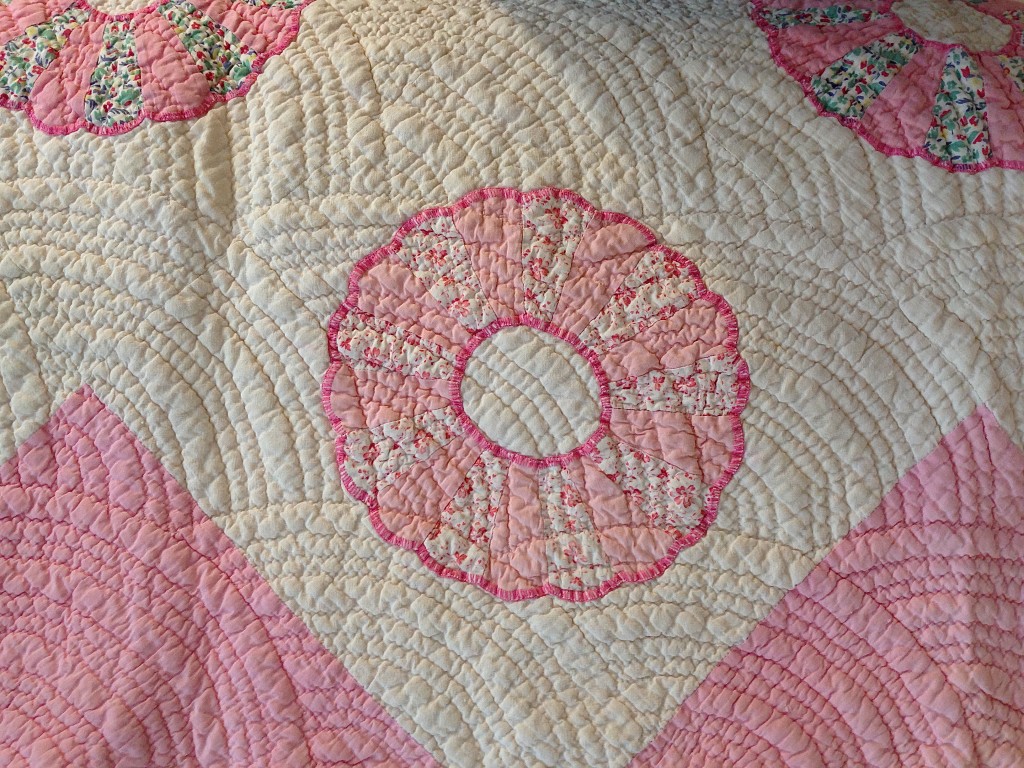needlework tools
This coming Sunday marks the Hari-Kuyo broken needle ceremony–a 400 year-old Buddhist tradition originating in Japan that honors the implements used by needleworkers. For this event, attendees are invited to bring their broken or bent needles and plunge them into blocks of tofu. In this action, they send their tools off to the next world in happiness and for success. The blocks of tofu, laden with needles, will be blessed by Buddhist priests as part of the ceremony.
As I look around my studio, there are many types of needles–darning, bookbinding, sewing machine, knitting, crewel, embroidery–as well as books about techniques and histories of needleworkers and stitchers.
Therese de Dilmont states in her introduction to The Complete Encyclopedia of Needlework that “Furthermore, in whatever circumstances of fortune one may be placed, the ability to sew well will always be useful. On the other [sic] hand, a practical knowledge of plain sewing enables one to appreciate other people’s work at its true value, and on the other hand, it enables one to produce strong and lasting work should the need arise.”

one of the ‘scrap’ quilts made by Nannie
Over the past week, my beloved aunt and I have been reminiscing about sewing, for she along with my mother and grandmother were keen sewers. As a young girl, I adored going to the fabric store and looking at not only the patterns, but also the fabric and notions. The sewing store in Hickory, NC was a wood building with proper screen doors and the interior was clad in wood paneling. Hung high adorning the walls were posters of current fashions alongside sewing ephemera. Bolts of fabric were stacked around the room and there were large cutting tables, racks of thread and buttons, pattern books on large slanted tables, and women eager to help you with your project.
My aunt tells me that she made her children’s clothes but did not use patterns. Instead, she designed the dresses in her mind, purchased the fabric and notions, and went home and made them. This is awe-inspiring to me, and as de Dilmont says, it makes me appreciate my aunt’s skills; in order to sew successfully, one must not only understand the physical nature of the cloth, but how it will work with the design. These are skills that I am now learning with some difficulty, so I wish that I had paid more attention to the sewers in my family.

a pink quilt that was on my bed as a child made by Nannie
The numerous garments that my aunt made as well as the ones made for me are long gone, given to other children or donated to church jumble sales. Fortunately, my grandmother also made quilts from scraps and remainders of sewing projects, and on one treasured quilt there are squares made from my school dresses. When I crawl under this quilt, I am reminded of walking into school on an early September day proudly wearing my blue dress with patterns of flowers and birds, sewn for my by the hands of my grandmother.
Therese de Dilmont, The Complete Encyclopedia of Needlework, (Running Press, 1996, Third Edition), pg. 11.
Note: One may attend a Hari-Kuyo Ceremony this Sunday February 8th at 4:30 at the BF+DA, Brooklyn, NY. For further information, http://bkaccelerator.com/engagesingle/nyfw-bfda-hari-kuyo/
For further reading about needlework:
Marla R. Miller, The Needle’s Eye Women and Work in the Age of Revolution, (University of Massachusetts Press, Amherst, 2006).
Jane Brocket, The Gentle Art of Stitching 40 Projects Inspired by Everyday Beauty, (Collins and Brown, London, 2006).
Roderick Kiracofe, Unconventional and Unexpected American Quilts Below the Radar 1950-2000, (STC Craft, New York, 2014).
Cassandra Ellis, Cloth 30 + Projects to Sew from Linen, Cotton, Silk, Wool and Hide, (STC Craft, New York 2014).
Natalie Chanin, Alabama Studio Sewing Patterns (STC Craft, published in 2015).
Beautiful quilts, I love the soft colours.
Thanks, Debbie. I treasure these quilts knowing that my grandmother made them.